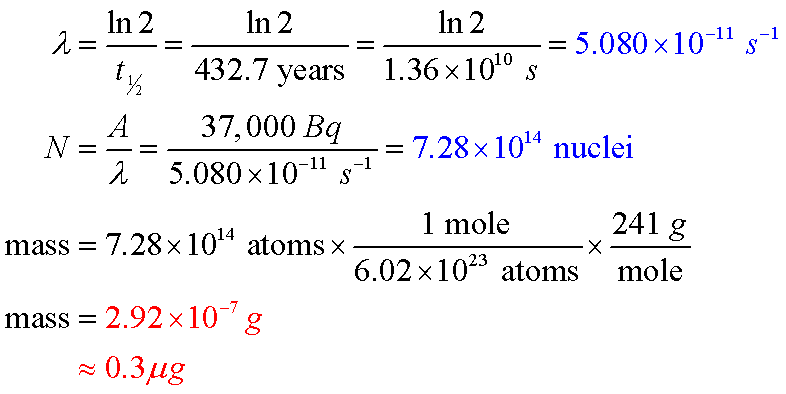- Computers are needed for lab this week
- Three copies of a No Eating/Drinking sign should be printed: two taped up outside the lab, one on the blackboard
- Logger Pro does not see the radiation monitor when the program is launched (the green 'Collect' button is grayed out) Students should first open the file from the T:\Phys104 drive, after which a 'Sensor Confirmation' window will pop up. Students click the Connect button, and all is well. This has been included in the lab instructions
- We have six new Vernier Radiation Monitors with a mute switch, which should be turned off. The older versions lacked this switch and chirped incessantly.
- Students are told that Am 241 is in the smoke detector
- We no longer ask students to determine which isotope of Americium is in the smoke detector by looking at the chart of the nuclides. Phys152 lab still does this and I have an explanation in the 152 instructor notes
- There is a very large discrepancy between the published activity rate (37 kBq) and the measured rate with the detector directly on the source (~500-600 Bq). There are two reasons that might explain this: there is still a small air gap between the source and detector; the published rate is for radiation emitted in all directions around a spherical source, and the detector is just measuring a small region
- The mean number of counts will often be higher for 2 or 3 sheets of paper than 1 sheet. Remind students that they're only taking one minute of measurements. If they collected more data the results might be more like they expect
- If students read the directions carefully (ha, ha), they are told in the Introduction that Am 241 is also a weak gamma (γ) ray emitter. Feel free to insert your own "Hulk, Smash!" joke
- Here is a copy of my Logger Pro output, with calculations
- Several will think that λ means they will be calculating a wavelength. *sigh*. Gently remind them that λ is the decay constant
- Using the published activity rate (also on the cap) of 37 kBq, they will calculate a mass of about 0.3 μg:

|
